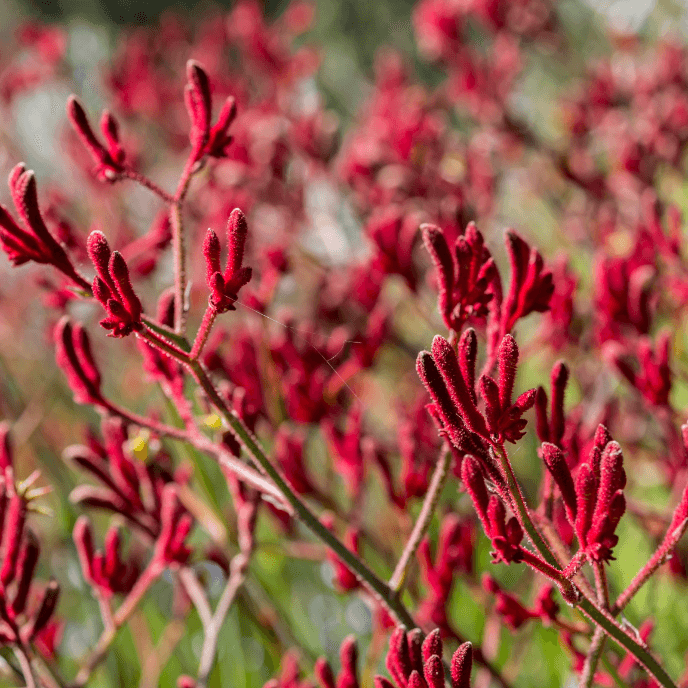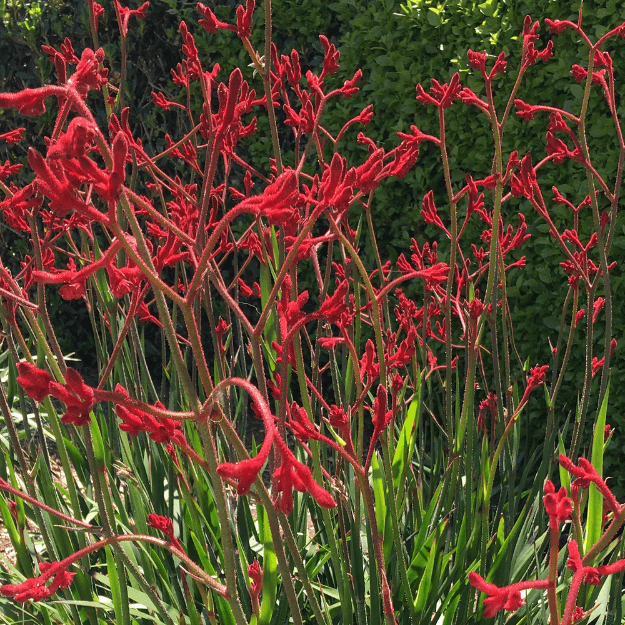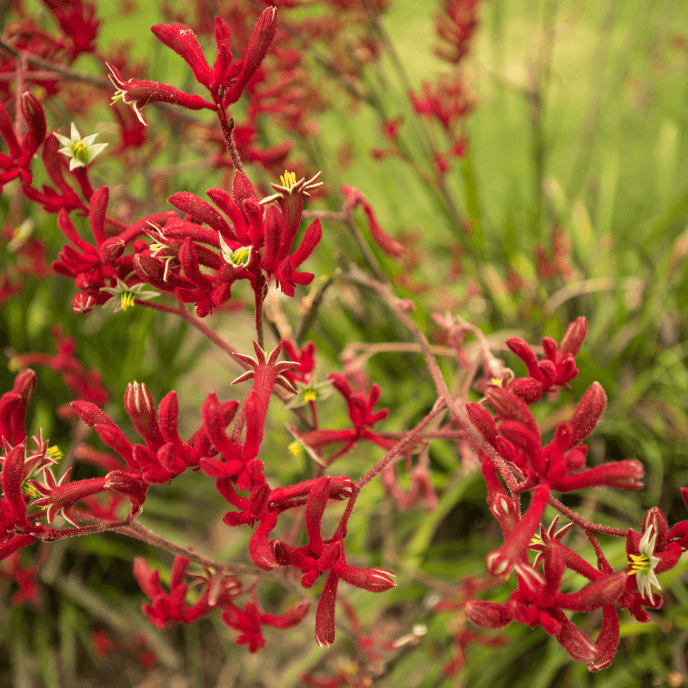
Red Kangaroo Paw
Anigozanthos 'Big Red'
Delivery
24-hour money-back guarantee
Free delivery on orders over $349
Big Project? Call 888-444-1126 for bulk rates!
Anigozanthos 'Big Red' is a beautiful and unique plant species that is well worth adding to your garden. Native to Western Australia, the Big Red Kangaroo Paw is known for its striking, fuzzy bright red flowers that resemble the paws of a kangaroo, hence its name. Not only is it visually stunning, but it is also a hardy and low-maintenance plant that is perfect for adding a splash of color to any garden.
One of the most striking features of the Big Red Kangaroo Paw is its fuzzy, tubular, red flowers that split lengthwise into six segments at the tip resembling "claws". The long blooming flowers appear from spring to fall and are held on tall, sturdy stalks that can reach up to 5 feet in height.
The dark green iris-like leaves of the Big Red Kangaroo Paw are 3 feet long and narrow, and fold at the midrib. 'Big Red' is a disease resistant, evergreen, clumping perennial that will provide greenery in your garden all year round.
When in bloom, Big Red Kangaroo Paw can get as tall as 6 feet and is considered one of the easiest to grow and most adaptable of the Kangaroo Paws. This tall Anigozanthos attracts hummingbirds to your garden and looks great in perennial gardens, cut flower gardens, and even in containers.
At Plants Express, we are dedicated to providing our customers with high-quality plants that will thrive in their gardens. The Big Red Kangaroo Paw is a beautiful and unique plant that is perfect for adding a splash of color to any garden. With its striking, red flowers and low-maintenance requirements, it is a great choice for any gardener. If you are looking for a hardy and low-maintenance plant that will bring color to your garden, consider the Big Red Kangaroo Paw from Plants Express.
How often should I water Red Kangaroo Paw?
How and when should I prune or maintain it?
What climates and hardiness zones does it grow in?
Are there any common pests or diseases?
3-6 ft.
2-3 ft.
Occasional
Hummingbirds
Perfect Your Landscape With Expert Help
Customize your yard with confidence. Schedule your free consultation today and bring your outdoor space to life!


